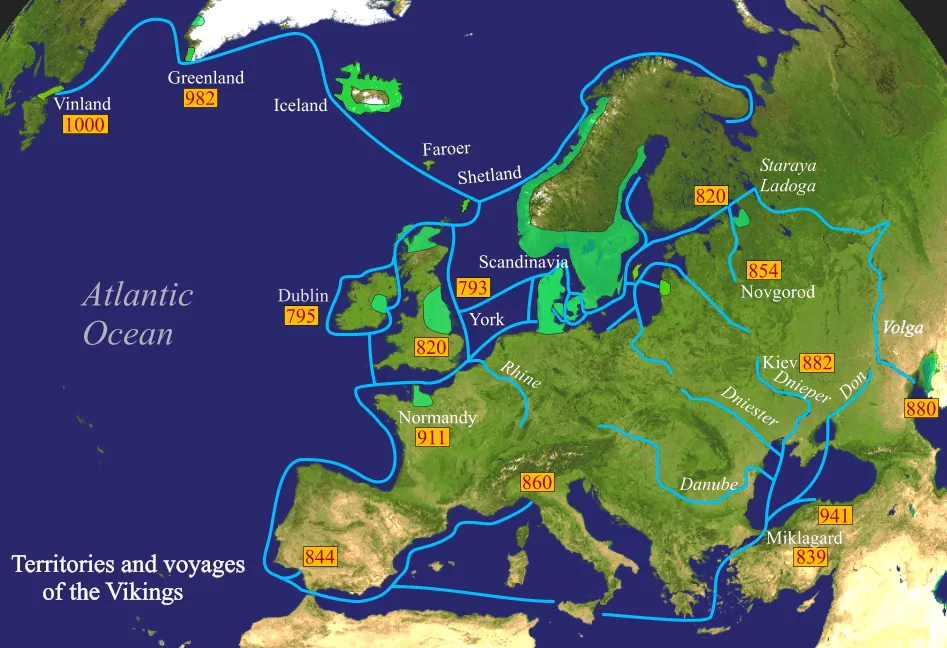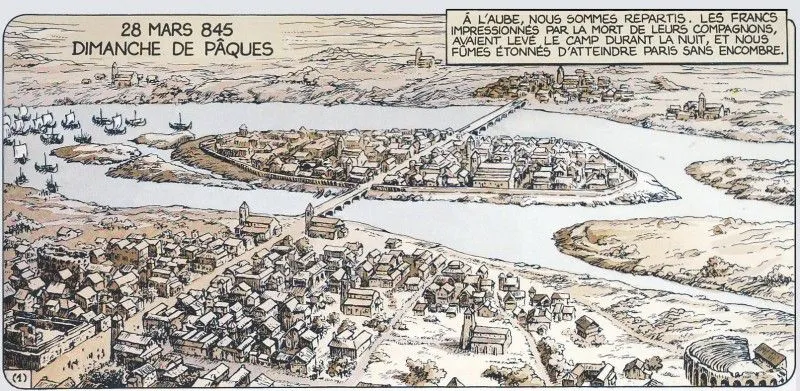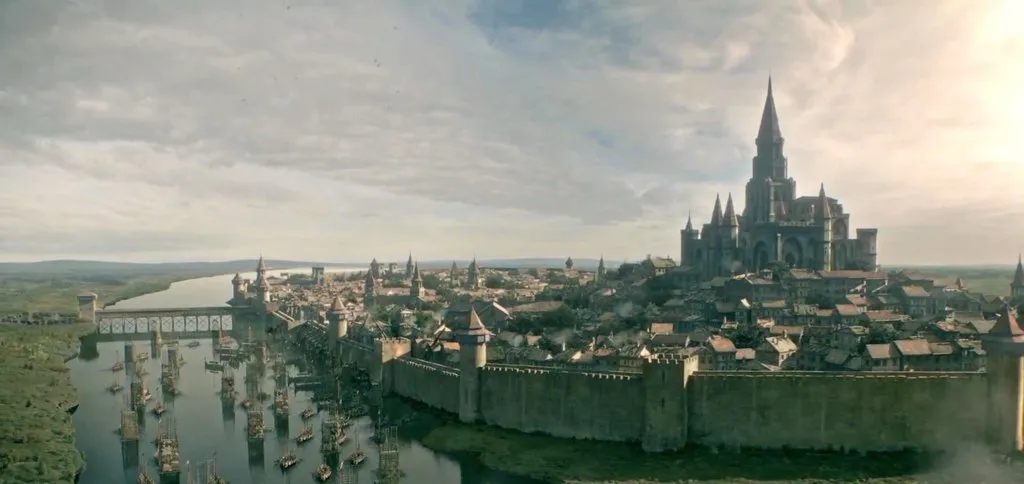Normandy, a fertile land in northern France, is famous not only for its long beaches, verdant fields, and ancient towns but also as a place that preserves the deep imprints of the Vikings. From brutal invasions to settlement and integration into local culture, the Vikings left behind a unique and fascinating legacy in Normandy. Join “Du lịch khắp thế gian” (Travel Around the World) to explore the journey of discovering the land of the Vikings in Normandy, where history, culture, and cuisine intertwine in a wondrous way.
Viking Footprints in Normandy
Popular TV shows like “Vikings” or “The Last Kingdom: The Ancient Norsemen” have sparked curiosity in many about the Vikings. So, who were the Vikings really? Were they just barbarians, or also explorers, farmers, and skilled traders? The answer is all of the above, because the Vikings were a complex people with a rich culture, a tight-knit social organization, deep spiritual beliefs, and great economic ambitions.

Rollo and the Formation of the Duchy of Normandy
In the 9th and 10th centuries, the Vikings, whom the French called “Northmen,” frequently attacked and plundered the coastal regions of France. Rollo, a talented Viking leader, led his army to sweep through many lands, including Paris. However, instead of continuing to plunder, Rollo recognized the potential of settling and exploiting the fertile land of Normandy.
In 911, Rollo signed the Treaty of Saint-Clair-sur-Epte with King Charles III of France, according to which Rollo was granted control of the Neustria region (later called Normandy) in exchange for protecting this land from other Viking attacks. Rollo became the first Duke of Normandy, laying the foundation for a powerful Viking dynasty on French soil.
Viking Influence on Normandy Culture
The rule of Rollo and his successors brought stability and prosperity to Normandy. The Vikings quickly integrated into the local culture, adopting Christianity and learning French. However, they retained many Viking customs and traditions, creating a unique and diverse Norman culture.
Discovering Viking Relics in Normandy
Today, visitors can find traces of the Vikings throughout Normandy, from ancient villages to historical museums.
Bayeux Tapestry

The Bayeux Tapestry is a unique work of art that tells the story of the conquest of England by William the Conqueror, Rollo’s descendant, in 1066. This tapestry is not only an invaluable source of historical information but also a testament to the blend of Viking and Norman cultures.
Viking Museum in Rouen
The Viking Museum in Rouen displays many artifacts related to the Vikings in Normandy, including weapons, jewelry, pottery, and everyday items. The museum helps visitors better understand the life, culture, and beliefs of the Vikings in France.
William the Conqueror’s Castle in Falaise
Falaise Castle is the birthplace of William the Conqueror, who led the Norman army to invade England in 1066. This castle is a symbol of the power and dominance of the Normans, and also a testament to the inheritance of Viking heritage.
Enjoying Normandy Cuisine, Blending Viking Flavors
Normandy cuisine is also significantly influenced by the Vikings. Traditional dishes of this region often use local ingredients such as apples, cream, butter, and seafood, combined with Viking cooking techniques.
Cider and Calvados
Cider and Calvados are two distinctive drinks of Normandy, originating from the Viking era. The Vikings brought apple varieties from their Scandinavian homeland to Normandy and began producing cider, a popular drink in Viking culture.
Seafood Dishes
With its coastal location, Normandy is famous for its fresh seafood dishes. The Vikings, with their seafaring and fishing skills, contributed to the development of the seafood industry in Normandy.
Viking Sports and Activities Today
Although the Viking Age has passed, the Viking spirit and culture are still maintained and honored through sports and festivals.
Joutes Nautiques
Joutes Nautiques is a traditional sport of Normandy, in which two teams compete on boats, trying to push their opponents into the water with a pole. This sport originated from the Viking era, when Viking warriors often competed with each other on boats to practice combat skills.
Viking Festivals
Normandy hosts many Viking festivals throughout the year, attracting a large number of tourists and locals. These festivals often include activities such as reenactments of Viking battles, displays of Viking costumes and weapons, Viking music performances, and Viking cuisine tasting.

Conclusion
The journey to explore the land of the Vikings in Normandy is a unique and fascinating experience, helping visitors better understand the history, culture, and cuisine of this region. From historical sites to traditional dishes and sports activities, visitors will feel the deep imprint of the Vikings in Normandy, a beautiful and traditionally rich land. Are you ready for a journey to explore Normandy, the land of the Vikings? Share what you want to explore most about this land!